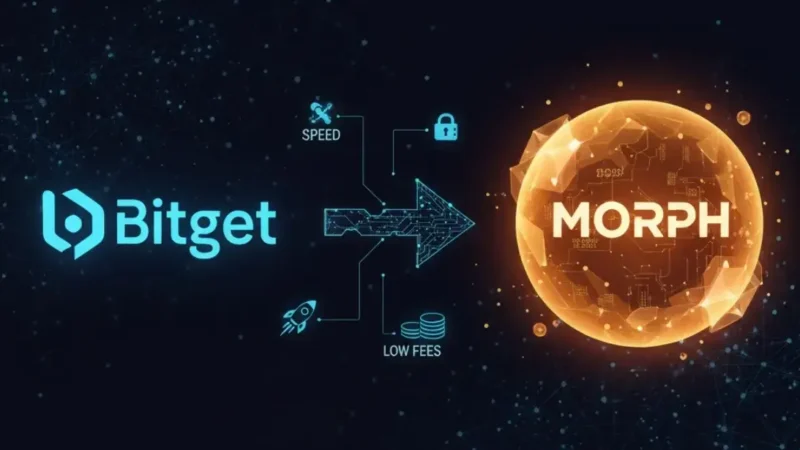How to Stake Ethereum 2.0 in DeFi?

The crypto world is constantly evolving, and few transformations have been as significant as Ethereum’s transition from a Proof-of-Work (PoW) to a Proof-of-Stake (PoS) consensus mechanism. This monumental upgrade, often referred to as “Ethereum 2.0” or more accurately, the Consensus Layer upgrade (completed with “The Merge” in 2022), fundamentally changed how the network secures itself and validates transactions. For users, it opened up a new avenue for passive income: staking.
While traditional staking involves locking up your ETH to support the network, the decentralized finance (DeFi) ecosystem has introduced innovative ways to enhance this process, offering flexibility and additional yield opportunities. This article will delve into How to stake Ethereum 2.0 in DeFi, exploring the mechanisms, benefits, risks, and a practical guide for getting started.
The Ethereum Evolution: From Mining to Staking
Before “The Merge,” Ethereum relied on a PoW mechanism, similar to Bitcoin, where “miners” used powerful computers to solve complex puzzles, consuming significant energy. The transition to PoS, spearheaded by the Beacon Chain and subsequently integrated with the Ethereum Mainnet, replaced miners with “validators.” Validators secure the network by “staking” their ETH as collateral. In return for validating transactions and proposing new blocks, they earn rewards.
The primary goals of this transition were to improve scalability, reduce energy consumption, and enhance security. With PoS, the likelihood of a validator being chosen to create a new block is proportional to the amount of ETH they have staked. This shift made staking a cornerstone of the Ethereum network’s operation and opened doors for participation far beyond the realm of specialized mining hardware.
Staking Ethereum: Different Paths to Participation
For those looking to participate in Ethereum’s security and earn rewards, several methods exist:
- Solo Staking: This is the most direct way to stake, involving running your own validator node. It requires a significant commitment of 32 ETH and technical expertise to set up and maintain the node 24/7. While offering the highest rewards and maximum control, it’s a high barrier for most individuals.
- Centralized Exchange (CEX) Staking: Many centralized exchanges (like Coinbase, Binance, Kraken) offer staking services. Users can deposit any amount of ETH, and the exchange handles the technical complexities. This is convenient but comes with custodial risk (you don’t control your private keys) and often lower yields due to fees charged by the exchange.
- Pooled Staking / Liquid Staking (DeFi-Centric): This method allows users to pool their ETH together to reach the 32 ETH threshold required for a validator. Crucially, within DeFi, this evolved into “liquid staking,” which is precisely How to stake Ethereum 2.0 in DeFi while maintaining liquidity.
Unlocking Liquidity: What is Liquid Staking in DeFi?
The major drawback of solo and some pooled staking methods is illiquidity – your staked ETH is locked and cannot be accessed or used for other purposes. Liquid staking protocols emerged to solve this problem, creating a bridge between the locked nature of staked assets and the dynamic, composable world of DeFi.
How Liquid Staking Works: When you deposit ETH into a liquid staking protocol, the protocol stakes your ETH on your behalf by running validator nodes. In return, you receive a new, tokenized representation of your staked ETH, known as a Liquid Staking Token (LST). Examples include stETH from Lido Finance or rETH from Rocket Pool.
These LSTs are unique because they accrue staking rewards while remaining liquid. This means:
- They can be traded: You can sell your LSTs on a decentralized exchange (DEX) at any time, effectively “unstaking” without waiting for the network’s unbonding period.
- They can be used in other DeFi protocols: This is where the magic of How to stake Ethereum 2.0 in DeFi truly shines. Your LSTs can be used as collateral for loans, deposited into liquidity pools to earn trading fees, or even leveraged in complex yield farming strategies, all while continuing to earn native Ethereum staking rewards. This “composability” allows for multiple layers of yield generation from a single underlying asset.
Leading Protocols for How to Stake Ethereum 2.0 in DeFi
Several protocols facilitate liquid staking, each with its own model and features. Understanding the differences is key to choosing the right platform for How to stake Ethereum 2.0 in DeFi:
- Lido Finance (stETH): Lido is currently the largest liquid staking protocol by staked ETH. When you stake ETH with Lido, you receive stETH in return. stETH is a “rebasing” token, meaning your stETH balance in your wallet automatically increases daily to reflect accrued staking rewards. Lido manages a decentralized network of node operators, making it a popular choice due to its high liquidity and widespread integration across the DeFi ecosystem.
- Rocket Pool (rETH): Rocket Pool offers a more decentralized approach to liquid staking. Instead of a rebasing token, rETH is an “exchange rate” token. Its value relative to ETH increases over time as staking rewards accumulate. Rocket Pool allows anyone to become a node operator by staking 8 ETH and some RPL (Rocket Pool’s native token), fostering greater decentralization. This platform is another excellent option for those exploring How to stake Ethereum 2.0 in DeFi.
- Other Protocols: Beyond Lido and Rocket Pool, emerging players like Swell Network (swETH), Frax Finance (sfrxETH), and Coinbase’s cbETH (a centralized liquid staking token) also offer compelling options, each with slightly different reward mechanisms, fee structures, and decentralization levels. It’s crucial to research and understand each protocol before committing funds.
The Compelling Benefits of Staking Ethereum in DeFi
Engaging in liquid staking for Ethereum offers a range of attractive advantages:
- Access to Staking Rewards: The fundamental benefit remains earning native Ethereum staking rewards, contributing to the network’s security and receiving a share of newly issued ETH.
- Enhanced Capital Efficiency: This is arguably the biggest game-changer. Unlike traditional staking where your capital is locked, LSTs allow you to put your staked ETH to work in other DeFi protocols. You can lend it out to earn additional interest, provide liquidity to decentralized exchanges (DEXs) to earn trading fees, or use it as collateral for borrowing, effectively earning multiple yields on the same underlying asset. This truly exemplifies the power of How to stake Ethereum 2.0 in DeFi.
- Lower Barrier to Entry: You don’t need 32 ETH to participate. Liquid staking protocols allow you to stake any amount of ETH, making staking accessible to a much broader audience.
- Liquidity: No long unbonding periods. If you need to access your ETH quickly, you can sell your LSTs on a secondary market, providing instant liquidity.
- Ease of Use: Liquid staking protocols abstract away the technical complexities of running a validator node, making it simple for even novice users to participate.
- Contribution to Network Decentralization: By distributing staking power across various protocols and potentially many individual node operators (as with Rocket Pool), liquid staking can contribute to a more robust and decentralized Ethereum network.
Navigating the Risks: What to Be Aware Of
While the benefits are substantial, it’s crucial to understand the risks involved when considering How to stake Ethereum 2.0 in DeFi:
- Smart Contract Risk: All liquid staking protocols and integrated DeFi platforms rely on smart contracts. Bugs, exploits, or unforeseen vulnerabilities in these contracts could lead to a loss of staked funds. Always choose protocols that have undergone rigorous audits.
- Slashing Risk: Validators can be penalized (“slashed”) for misbehavior (e.g., going offline, double-signing transactions). While liquid staking protocols manage this risk by distributing it across many validators, LST holders are still exposed to this possibility, which can result in a reduction of their staked ETH.
- De-pegging Risk: An LST is designed to track the value of ETH. However, during periods of high market stress or specific protocol issues, an LST (like stETH) might “de-peg” and trade at a discount to ETH. While arbitrageurs typically correct this over time, it can lead to temporary losses if you need to sell during a de-peg event.
- Centralization Concerns: While some liquid staking protocols strive for decentralization, others, particularly the largest ones, concentrate a significant amount of staked ETH. This raises concerns about the potential for single points of failure or influence over the network’s consensus.
- Protocol-Specific Risks: When you use your LSTs in other DeFi applications (lending, liquidity pools), you introduce additional risks associated with those specific protocols, such as impermanent loss in liquidity pools or smart contract risks of lending platforms.
- Market Volatility: The value of ETH itself is subject to market fluctuations. Even if your staking rewards are accruing, the fiat value of your total holdings can decrease if ETH’s price drops significantly.
Step-by-Step Guide: How to Stake Ethereum 2.0 in DeFi
Ready to dive in? Here’s a general step-by-step guide on How to stake Ethereum 2.0 in DeFi:
- Do Your Research & Choose a Protocol:
- Thoroughly research reputable liquid staking protocols like Lido, Rocket Pool, or others.
- Consider their security audits, community reputation, fee structure, and decentralization model.
- Understand the specific LST they issue (e.g., stETH, rETH) and how it accrues rewards (rebasing vs. exchange rate).
- Acquire ETH & Set Up a Compatible Wallet:
- Ensure you have ETH in a non-custodial Web3 wallet, such as MetaMask, Ledger, or Trezor. This wallet will connect to the DeFi protocols.
- Make sure you have a small amount of extra ETH for gas fees (transaction costs) on the Ethereum network.
- Connect Your Wallet to the Liquid Staking DApp:
- Go to the official website of your chosen liquid staking protocol (e.g., Lido.fi, RocketPool.net). Be extremely cautious of fake websites.
- Click on “Connect Wallet” (usually in the top right corner) and select your wallet provider. Confirm the connection request in your wallet.
- Deposit Your ETH:
- Locate the staking interface on the DApp.
- Enter the amount of ETH you wish to stake. Remember, there’s typically no minimum for liquid staking.
- The DApp will show you how much of the corresponding LST you will receive.
- Review the transaction details, including estimated gas fees, and confirm the transaction in your wallet.
- Receive Your Liquid Staking Tokens (LSTs):
- Once the transaction is confirmed on the Ethereum blockchain, your wallet will receive the LSTs (e.g., stETH or rETH).
- You might need to manually add the LST’s token contract address to your wallet to see the balance. You can usually find this on the protocol’s official documentation or Etherscan.
- Utilize Your LSTs in DeFi (Optional but Recommended for those looking for How to stake Ethereum 2.0 in DeFi):
- Now that you have your LSTs, you can explore various DeFi opportunities:
- Lending: Deposit your LSTs into money markets like Aave or Compound to earn additional interest.
- Liquidity Provision: Pair your LSTs with ETH or other stablecoins on DEXs like Uniswap or Curve to earn trading fees. Be mindful of impermanent loss.
- Collateral: Use your LSTs as collateral to borrow other cryptocurrencies or stablecoins.
- Yield Farming: Explore more complex strategies that involve multiple protocols to maximize yield.
- Now that you have your LSTs, you can explore various DeFi opportunities:
- Monitor Rewards and Manage Risks:
- Regularly check your LST balance (for rebasing tokens) or its value relative to ETH (for exchange rate tokens) to monitor your staking rewards.
- Keep an eye on the performance of any DeFi protocols where you’ve deployed your LSTs.
- Stay informed about any news or updates regarding the liquid staking protocol or Ethereum network.
- Unstaking/Exiting Your Position:
- If you wish to convert your LSTs back to ETH, you typically have two main options:
- Sell on a Secondary Market: The quickest way is to sell your LSTs for ETH on a DEX. This offers instant liquidity, though the price might vary slightly from the 1:1 peg, especially during market volatility.
- Direct Redemption (when available): Some protocols allow you to redeem your LSTs directly for ETH from the protocol. This usually involves an unbonding period (which can vary) as the underlying ETH is unstaked from the Beacon Chain.
- If you wish to convert your LSTs back to ETH, you typically have two main options:
The Future of Staking: Decentralized, Liquid, and Efficient
The journey of Ethereum to a Proof-of-Stake network, coupled with the innovation of liquid staking in DeFi, has democratized participation in network security and created powerful new financial primitives. The ability to effectively earn staking rewards while maintaining capital liquidity is a significant leap forward for capital efficiency in the crypto space.
Stay informed, read the latest crypto news in real time!
As the DeFi ecosystem continues to mature and new protocols emerge, understanding How to stake Ethereum 2.0 in DeFi will become an increasingly vital skill for crypto participants. While the allure of compounding yields is strong, remember that prudence, thorough research, and a clear understanding of the inherent risks are paramount. By balancing opportunity with caution, you can effectively leverage Ethereum’s staking mechanism within the dynamic world of decentralized finance.




